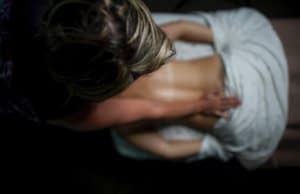Pools are not just for leisure anymore! You can do much more than simply swim in a pool. Aquatic therapy focuses on specific techniques in order to improve balance and coordination, reduce pain, improve heart endurance, enhance motor skills and control, improve range of motion, and to enhance the amount of weight the body can bear.
When the body is partially submerged in water, there is an upward thrust. This is because our bodies are buoyant. Buoyancy helps us defy gravity a bit, allowing those that have trouble with basic skills on land to be able to perform those skills in the water. Those with decreased joint function, weak muscles, low flexibility and range of motion, and others all benefit from aquatic therapy equally.
There are three types of aquatic exercises that are used commonly in order to maximize the results of aquatic therapy. They are as follows:
- Water Running or Walking: The client simply wades through the water at a pace that is comfortable for them and their current abilities. It can be done in shallow or deeper water and is great for strengthening the muscles. The idea is to move your limbs the same way you would on land, without the fear of falling or loss of balance. The resistance of the water as the client pushes forward helps to increase strength and also assists with balance as the client becomes more confident.
- Water Aerobics: The client performs leg lifts, flutter kicks, standing push-ups, arm curls, and other simple movements in order to increase mobility, balance, and strength. As with all aquatic exercises, the client is more confident than they would be on land, allowing for a more intense session without the need for heavy gym equipment!
- Weighted Exercises: Specific movements are performed with the client wearing arm and/or ankle weights in order to increase the intensity of the aquatic therapy session. The weights further increase the water-resistance, especially when it comes to jumping jacks! This allows for a heart-healthy workout that increases the efficiency of the body all around.
Working out in the water seems much less challenging than working out on land, especially for those with balance issues. However, even though it seems a bit more low-intensity than land workouts, it isn’t! Your body works harder in the water than it would on land, but it is more comfortable as you go through the movements in the pool.
Consult with a qualified aquatic therapist to see if aquatic therapy is a good fit for you, and what steps you will need to accomplish in order to reach your goal- whether it be for PT or aging!



